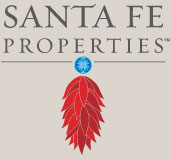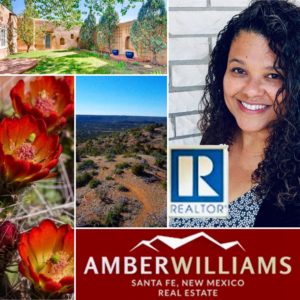Taos Pueblo
120 Veterans Highway, Taos, New Mexico 87571
505.758.1028
Our people have a detailed oral history which is not divulged due to religious privacy. Archaeologists say that ancestors of the Taos Indians lived in this valley long before Columbus discovered America and hundreds of years before Europe emerged from the dark ages. Ancient ruins in the Taos valley indicate our people lived here nearly 1000 years ago. The main part of the present buildings were most likely constructed between 1000 and 1450 a.D. The appeared much as they do today when the first Spanish explorers arrived in northern New Mexico in 1540 and believed that the Pueblo was one of the fabled golden cities of Cibola. The two structures called hlauuma (north house) and hlaukwima (south house) are said to be of similar age. They are considered to be the oldest continuously inhabited communities in the USA.
How were the buildings constructed?
The Pueblo is made entirely of adobe — earth mixed with water and straw, then either poured into forms or made into sun-dried bricks. The walls are frequently several feet thick. The roofs of each of the five stories are supported by large timbers — vigas — hauled down from the mountain forests. Smaller pieces of wood — pine or aspen latillas — are placed side-by-side on top of the vigas; the whole roof is covered with packed dirt. The outside surfaces of the Pueblo are continuously maintained by replastering with think layers of mud. Interior walls are carefully coated with thin washes of white earth to keep them clean and bright. The Pueblo is actually many individual homes, built side-by-side and in layers, with common walls but no connecting doorways. In earlier days there were no doors or windows and entry was gained only from the top.
Who lives in the Pueblo?
Approximately 150 people live within the Pueblo full time. Other families owning homes in the north or south buildings live in summer homes near their fields, and in more modern homes outside the old walls but still within Pueblo land. There are over 1900 Taos Indians living on Taos Pueblo lands.
What is the history of the Pueblo church?
The present san geronimo, or st. Jerome, chapel was completed in 1850 to replace the original church which was destroyed in the war with mexico by the u.S. Army in 1847. That church, the ruins still evident on the west side of the village, was first built in 1619. It was then destroyed in the Spanish revolt of 1680 but soon rebuilt on the same site. St. Jerome is the patron saint of Taos Pueblo.
What religion is practiced at Taos Pueblo?
The Pueblo Indians are about 90% catholic. Catholicism is practiced along with the ancient Indian religious rites which are an important part of Taos Pueblo life. The Pueblo religion is very complex; however, there is no conflict with the catholic church, as evidenced by the prominent presence of both church and kiva in the village.
How is the Pueblo governed?
A tribal governor and war chief, along with staffs for each, are appointed yearly by the tribal council, a group of some 50 male tribal elders. The tribal governor and his staff are concerned with civil and business issues within the village and relations with the non-Indian world. The war chief and staff deal with the protection of the mountains and Indian lands outside the Pueblo walls.
What is blue lake?
The single most dramatic event in the recent history of Taos Pueblo land is the 1970 return of 48,000 acres of mountain land including the sacred blue lake. It was taken by the U.S. Government in 1906 to become part of the national forest lands. Among the ritual sites where Taos people go for ceremonial reasons, blue lake is perhaps the most important. Its return is a tribute to the tenacity of Pueblo leaders and to the community’s commitment to guarding its lands for the spiritual, cultural and economic health of the Pueblo. The return of this land capped a long history of struggle. Blue lake and mountains are off-limits to all but members of our Pueblo.
What language is spoken at Taos Pueblo?
Tiwa is our native language. English and Spanish are also spoken.
How large is the Taos Pueblo land?
The land base is 99,000 acres with an elevation of 7,200 feet at the village.
What is the economic base of Taos Pueblo?
The tourist trade, arts, traditional crafts and food concessions are important employment sources at the Pueblo. Some tribal members are employed in the town of Taos. The Pueblo has a centralized management system where tribal members are employed in a variety of occupations.
What is the educational system?
The bureau of Indian affairs maintains an elementary school, located behind the south Pueblo in an area restricted to the public. The majority of teachers are Indian. There is also a preschool program for three and four-year-olds. An education committee comprised of Pueblo members oversees the education of students and monitors a scholarship program for students wishing higher education. Indian children also attend public schools in the town of Taos.
What handmade Taos wares are available for purchase?
Mica-flecked pottery and silver jewelry are made by local artisans and sold at many of the individually owned curio shops within the Pueblo. The Taos Indians, being great hunters, are also famous for their work with animal skins — moccasins, boots and drums. There are a growing number of contemporary Pueblo fine artists, combining Indian tradition with modern artistic expression. The outstanding Taos Pueblo trademark is the natural look, that is, the enhancement of natural material appearance without additional coloration.
What modern conveniences are available to Pueblo residents?
Our traditions dictate that no electricity or running water be allowed within the Pueblo walls. Most members live in conventional homes outside the village walls, but occupy their Pueblo houses for ceremonials.
When is the Pueblo open to visitors?
The Pueblo is generally open to visitors daily from 8 am to 4:30 pm, except when tribal rituals require closing the Pueblo. Late winter to early spring the Pueblo closes for about ten weeks. Please call ahead if you’ll be visiting during this time, 758-1028.
How connected is Taos Pueblo to other Indian communities in the southwest?
Taos is the northernmost of the nineteen New Mexico Pueblos. Our language is most closely related to that of Picuris, Isleta and Sandia Pueblos, but we are not related by blood. We traditionally trade with the plains and other Pueblo Indians, particularly at our San Geronimo day fair in september. A pow wow, held each july, brings Indians from many tribes to Taos for a native american weekend of trade and social festivities.
How does Taos Pueblo view the future?
As a sovereign nation within the United States, preserving our ancient traditions in the face of advancement of “modernization” is our prime concern. We are encouraged by an increased population of tribal members choosing to remain in Taos, as well as by these actions acknowledging Taos’ important cultural heritage: Taos declared a national historic landmark in 1965; blue lake returned to Taos in 1970; Taos Pueblo admitted to the world heritage society in 1992 as one of the most significant historical cultural landmarks in the world (other sites include the Taj Mahal, great pyramids and the grand canyon in the United States).

All real estate advertised herein is subject to the Federal Fair Housing Act and Equal Opportunities Act. Santa Fe Properties (“SFP”) strives in to confirm as reasonably practical all advertising information herein is correct but assumes no legal responsibility for accuracy and should be verified by Purchaser. SFP is not responsible for misinformation provided by its clients, misprints, or typographical errors. Prices herein are subject to change. Square footage amounts and lot sizes are approximates.
Santa Fe Properties
1000 Paseo de Peralta
Santa Fe, NM 87501
800.374.2931


Copyright© 2025 Amber Williams
Design and Hosting by Santa Fe Web Design

